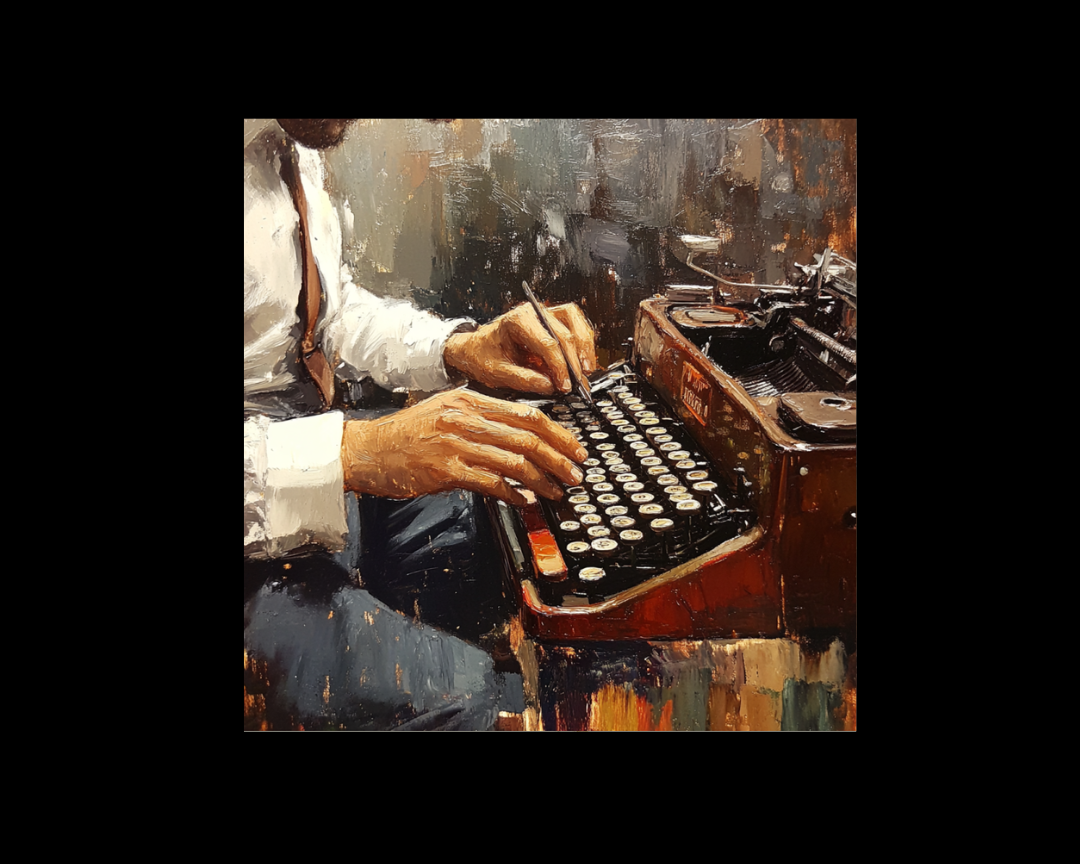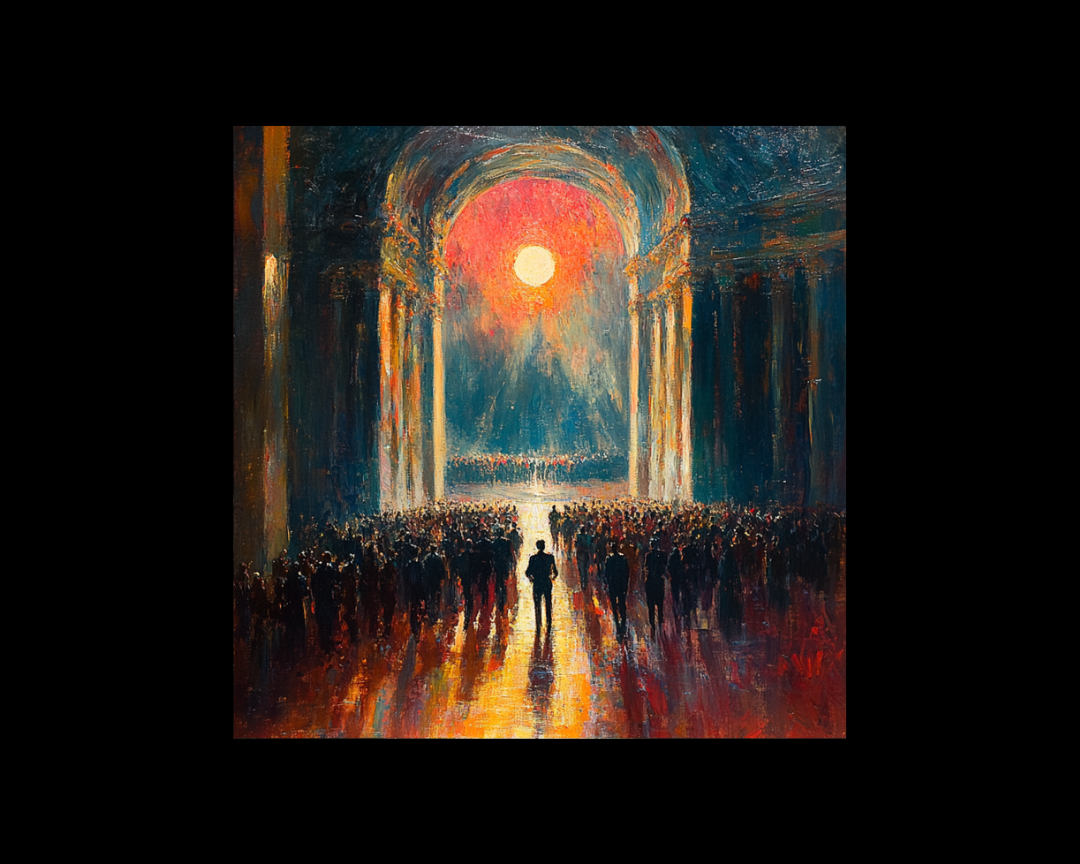Great Novellas and How to Write Them
The novella occupies literature's sweet spot—long enough to develop complex themes yet short enough to sustain perfect tension throughout. Ian McEwan...
5 min read
 Writing Team
:
Jun 9, 2025 3:27:27 PM
Writing Team
:
Jun 9, 2025 3:27:27 PM
-Jun-09-2025-07-23-48-0551-PM.png)
Every writer faces the same terrifying moment: staring at a blank page, wondering how random ideas transform into stories that make readers miss their train stops. The secret isn't inspiration—it's architecture. Just as architects don't build skyscrapers by hoping the steel beams will figure themselves out, successful writers construct stories using proven structural elements.
These ten components work together like instruments in an orchestra, each playing its part to create something greater than the sum of its parts. Master them, and you'll never again wonder why your story feels flat or why readers abandon it halfway through.
Plot isn't just "stuff that happens"—it's the deliberate sequence of events that creates momentum and meaning. Think of it as your story's skeleton, providing shape and support for everything else.
The most effective plots follow recognizable patterns because these patterns mirror how humans process information and emotion. Whether you use the three-act structure, Freytag's pyramid, or the hero's journey, certain elements remain constant: a hook that captures attention, an inciting incident that disrupts normalcy, rising action that builds tension, and a climax that resolves the central conflict.
Consider how The Hunger Games uses this structure. The hook establishes Panem's brutal world, the inciting incident occurs when Prim's name is drawn, rising action builds through training and arena preparation, and the climax centers on Katniss's final confrontation with survival itself. Each element serves the next, creating unstoppable forward momentum.
Your plot needs internal logic—each event should cause the next. Random coincidences might happen in life, but readers expect consequences in fiction. When Harry Potter learns he's a wizard, that revelation must lead to Hogwarts, which must lead to confronting Voldemort. Cause and effect drive engagement.
Setting encompasses three critical layers that many writers underestimate. Temporal setting includes not just when your story occurs, but what stage of life your characters inhabit. A retirement-age protagonist faces different stakes than a college freshman encountering the same situation.
Environmental setting covers culture, politics, social attitudes, and natural conditions. These invisible forces shape every character decision. In The Handmaid's Tale, Gilead's oppressive culture makes Offred's smallest acts of rebellion feel monumentally dangerous.
Individual setting involves specific locations where scenes unfold. But these spaces gain power when they reflect character or advance plot. The cramped apartment in Parasite isn't just where the Kim family lives—it's a physical manifestation of their social entrapment.
Effective setting serves multiple functions simultaneously. Wuthering Heights' Yorkshire moors mirror the characters' wild emotions while isolating them from civilizing influences. The setting becomes almost a character itself, influencing every interaction.
Point of view determines how intimately readers connect with your story. First person creates immediate intimacy—readers experience events directly through the narrator's consciousness. The Catcher in the Rye works because we're trapped inside Holden's troubled mind, experiencing his alienation firsthand.
Third person limited allows more objectivity while maintaining emotional connection. You can show what your protagonist thinks and feels without the constraints of their vocabulary or self-awareness. This flexibility makes it popular for both literary and commercial fiction.
Multiple perspectives can create rich complexity, as in Game of Thrones, where shifting viewpoints reveal how the same events affect different characters. However, this approach requires careful management to avoid confusing readers.
The experimental approaches—second person and omniscient—serve specific purposes. Second person works brilliantly in Italo Calvino's If on a winter's night a traveler because it makes readers active participants. Omniscient narration allows Victorian-style commentary on human nature, as in Terry Pratchett's Discworld novels.
Characters drive plot through their decisions, but compelling characters need internal complexity. Every protagonist needs both conscious wants (what they think they need) and unconscious needs (what they actually require for growth or happiness).
In Pride and Prejudice, Elizabeth wants to marry for love, but she needs to overcome her prejudice against Darcy. This tension between want and need creates the story's central conflict and eventual resolution.
Character flaws aren't just personality quirks—they're story engines. Hamlet's indecision, Jay Gatsby's romantic idealism, and Tyrion Lannister's need for approval all generate the conflicts that drive their respective narratives forward.
Supporting characters serve specific functions: allies provide assistance, antagonists create obstacles, and mentors offer guidance. But each should feel like a complete person with their own motivations rather than just a plot device. Even minor characters deserve distinct voices and believable reasons for existing in your story.
Without conflict, you have a series of events, not a story. Conflict occurs when characters want incompatible things, creating tension that propels readers forward. The most engaging stories layer multiple conflict types.
Character versus character provides obvious drama—Harry Potter versus Voldemort, Elizabeth Bennet versus Mr. Darcy's pride. But internal conflicts often prove more compelling. Katniss Everdeen's external battle against the Capitol gains power from her internal struggle between survival and sacrifice.
Character versus society conflicts explore broader themes. To Kill a Mockingbird uses Atticus Finch's legal defense to examine racial injustice, while The Handmaid's Tale pits Offred against Gilead's oppressive system.
Character versus nature conflicts test human resilience against impersonal forces. The Old Man and the Sea gains meaning from Santiago's struggle with the marlin and his own aging body, representing humanity's battle against time and mortality.
Narrative momentum ensures readers never want to put your book down. Each scene should either advance plot, develop character, or both. If a scene serves neither purpose, cut it.
Momentum comes from escalating stakes. What starts as a small problem must grow larger, forcing characters to make increasingly difficult choices. In Breaking Bad, Walter White begins by cooking meth to pay medical bills but ends up battling drug cartels and law enforcement.
Vary your pacing between action and reflection. High-intensity scenes need quieter moments for readers to process emotions, but quiet scenes shouldn't feel static. Use them to develop relationships, reveal backstory, or build toward the next crisis.
Chapter endings should create questions that pull readers forward. Will the protagonist survive? How will they escape this situation? What will they choose when forced to decide? Answer one question while raising another.
Readers sense when stories have rich foundations beneath the surface action. This depth comes from backstory—not just what happened before your story begins, but how those experiences shaped your characters' worldviews and behaviors.
You don't need to reveal everything, but you must know it. When characters react to situations, their responses should feel authentic to their personal histories. A character who survived childhood abuse might respond differently to conflict than one raised in a loving home.
Subplots add complexity by giving secondary characters their own goals and obstacles. In The Lord of the Rings, Sam's loyalty to Frodo, Aragorn's acceptance of kingship, and Boromir's struggle with temptation all enrich the central quest narrative.
Cultural details make fictional worlds feel lived-in. What songs do people sing? What foods do they eat? How do they greet friends versus strangers? These specifics create authenticity without requiring exposition dumps.
Strong endings feel both surprising and inevitable. Readers shouldn't see them coming, but once they arrive, they should feel like the only possible conclusion to everything that came before.
Resolution doesn't require happiness, but it demands consequence. Characters should receive what they need, even if it's not what they wanted. In Of Mice and Men, George gets what Lennie needs—peace—even though it destroys George's dream of their shared future.
Tie up major plot threads while leaving room for readers' imagination. The Great Gatsby resolves the central love triangle but leaves us wondering about Nick's future and America's moral direction.
Avoid introducing new information in your conclusion. Revelation endings work when they recontextualize existing information, not when they depend on facts readers couldn't have known.
Theme emerges from how your story elements work together. It's not a message you impose but a meaning that develops naturally from character choices and consequences.
Harry Potter isn't about a boy wizard—it's about choosing love over power. The Great Gatsby isn't about parties and romance—it's about the corruption of the American Dream. These themes arise from the protagonists' actions and the worlds' responses to those actions.
Some writers begin with themes and craft stories to explore them. Others discover themes during revision. Both approaches work, but themes feel forced when they override character motivation or plot logic. Let meaning emerge from authentic human behavior rather than imposing it from outside.
Understanding these ten elements transforms writing from guesswork into craft. Each component supports the others, creating stories that engage readers emotionally and intellectually. Whether you're plotting your first novel or revising your tenth, these structural principles provide the foundation for compelling fiction.
Remember: rules exist to serve the story, not the other way around. Once you understand these elements thoroughly, you can bend or break them purposefully to create the specific effects your unique vision requires.
Ready to craft stories that readers can't put down? Our expert content creators at Hire a Writer understand how to weave these essential elements into compelling narratives that captivate audiences and achieve your publishing goals. From structural development to final polish, we provide the professional guidance that transforms promising ideas into unforgettable stories.

The novella occupies literature's sweet spot—long enough to develop complex themes yet short enough to sustain perfect tension throughout. Ian McEwan...

Most writers struggle with one genre, clinging to familiar territory like medieval serfs bound to their feudal plots. But the most successful authors...

Story endings can be thrilling, rewarding, and, for many writers, intimidating. A strong ending must provide resolution, deliver emotional impact,...